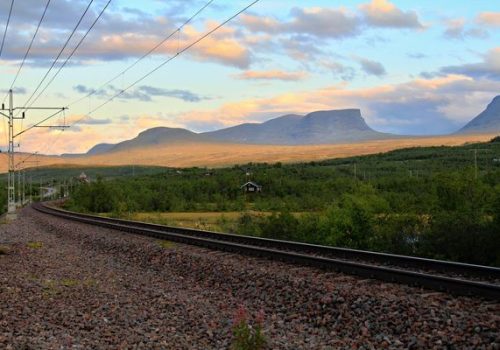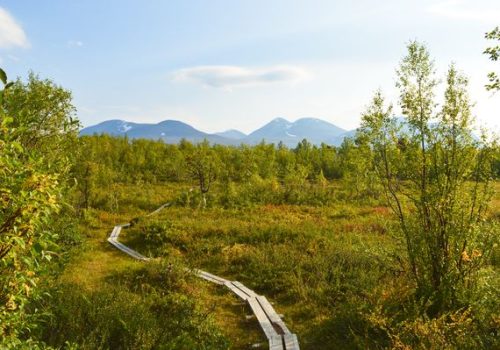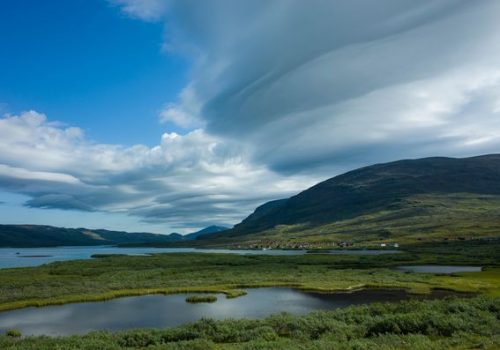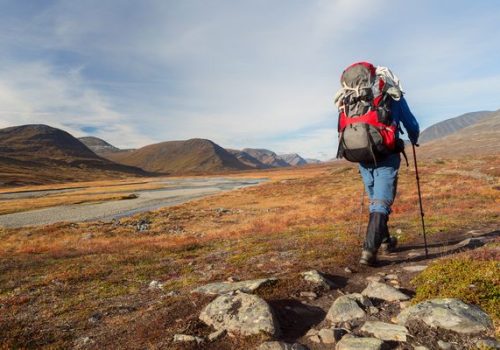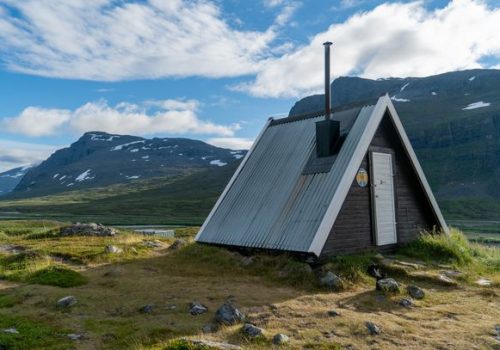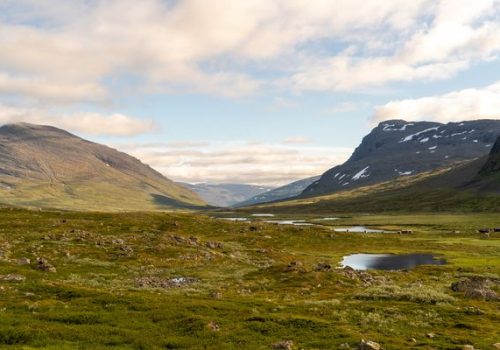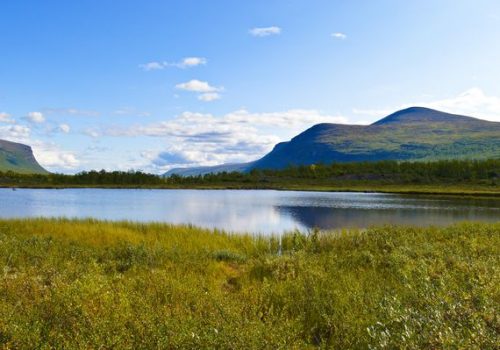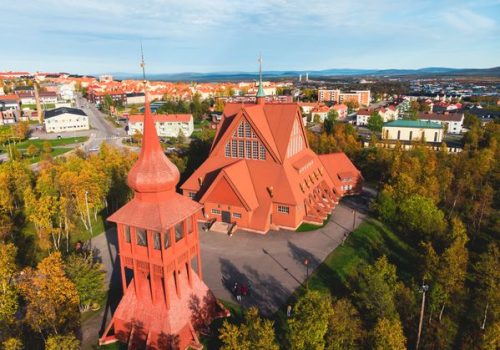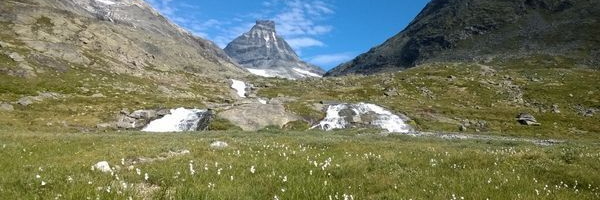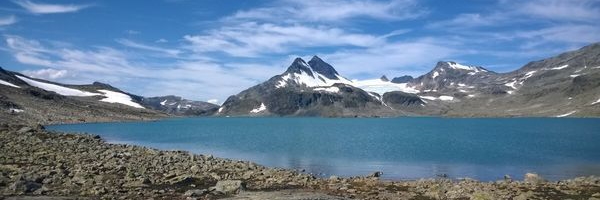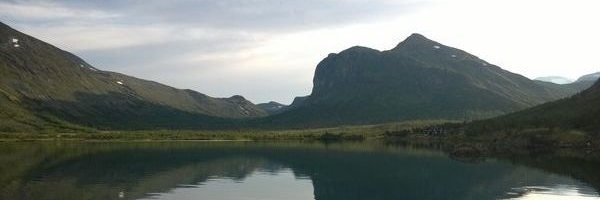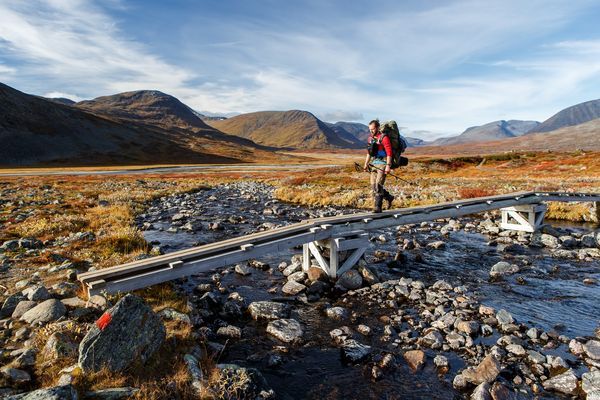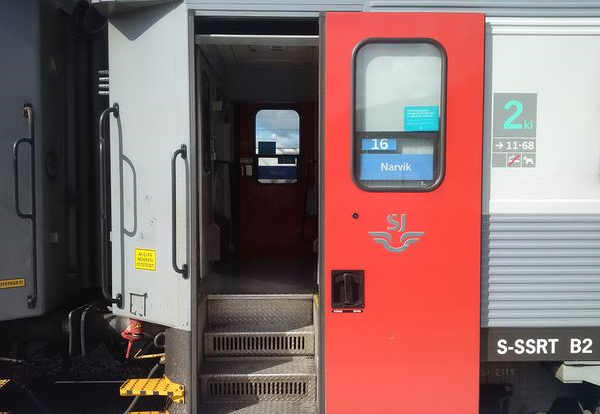Where we stay
On our normal 6-stage trip, you will stay in mountain huts for 6 nights, of which 4 are self-catered and 2 are catered (dinner, breakfast and packed lunch included). Your final night will be in a hotel in Kiruna, a treat in terms of (relative) bustle and facilities! As standard, you will be staying in dormitory accommodation at the 6 huts.
Abisko and Kebnekaise are catered huts while the remaining 4 huts are self-catered; here are more details on these two hut types:
Full-service mountain huts (Turiststations or Fjällstations)
The larger, full-service, huts at Abisko and Kebnekaise are akin to the larger DNT huts in Norway, to a Youth Hostel in the UK or to a larger and smarter Alpine hut. Leave your boots in the doorway, check in at the reception desk and find your room or dormitory. A 2- or 3- course dinner is served at typically one or two sittings each evening. A well-stocked shop sells snacks, souvenirs and essentials such as gloves and compasses. There are self-catering kitchens available, but as standard we include dinner and breakfast at these two huts.
Self-catering mountain huts (Fjällstugas)
Guests arrive and are allocated a bunk by the hut warden. Duvets, pillows and blankets are provided. You only need to bring a sheet liner. Some of these self-catered huts have a shop stocked with supplies for dinner, breakfast and a simple packed lunch. Buy your food from the store and cook by yourself or with other guests. Tjäktja and Singi do not have shops so on some days you’ll need to carry food in advance for dinner, breakfast and lunch. You can also bring in your own supplies of basics and augment from the stores. You will find the Swedish self-catering huts extremely orderly, with clearly defined tasks that all must undertake to keep the cabins spotless and resupplied. The warden may assign you a task such as chopping some wood, carrying water from the stream, or sweeping the floors. All are taken in good spirit and everyone lends a hand so it is light work! We book your stay, but because of the limited space there is a chance of your bed being a mattress on the floor as opposed to a bunk bed; it depends on how many are staying and on who arrives when.
Private Rooms
The two full-service huts, Abisko and Kebnekaise, have a limited number of private rooms, and we can book these for a small additional supplement if they are available. Please let us know if you’d be interested in private rooms and we can book these for your trip if they are available.
Saunas
The Swedes are huge sauna fans and you will find 3 huts with saunas on this route. They are great to loosen-off your tight hiking muscles, and also provide a welcome opportunity to wash in hot water as there are no showers on the route. It is normal for there to be one sauna for all guests (but male and female saunas at Kebnekaise) and to go in without any clothes on. In the self-catering huts, again guests need to earn their sauna, by sawing and splitting the wood and hauling the water needed to keep the sauna going!
Single Room Supplement
The single room supplement covers the additional cost of booking single rooms on your hotel night in Kiruna, rather than sharing a double, twin or triple room. Unfortunately, because of the way the huts operate, it’s not possible to book single rooms in the huts.
Solo Travel
We do not take bookings for solo walkers on self-guided trips. If you are still interested in this trip, we do have availability on our guided trips.
STF Membership
We are delighted to be able to include membership to the Swedish STF as part of your trip cost. The STF (Svenska Turistföreningen) is the Swedish trekking and travel association and your membership will be valid for the year of your trip, e.g. the remainder of 2025 for trips during 2025. Membership gives us (and therefore you) discounted rates at huts; this saving is accounted for in our prices. Membership also gives you benefits like discounts in the STF Abisko or Kebnekaise shops and supports the maintenance of the national parks. All huts including Abisko and Kebnekaise are owned by the Swedish hiking association, the STF. Like the DNT in Norway, it’s the body that is responsible for Sweden’s national parks, the network of 350 huts and hostels, and promoting outdoor life and the preservation of the Swedish natural world. We are delighted that our trekkers become bona fide STF members like so many Swedish trekkers.
In the run-up to your trip we will ask the date of birth of everyone in your group, as it’s required for the STF membership, and also a phone number to which your membership details can be texted. You can then use the STF app on your Android or iPhone to show your membership to hut wardens and others.
 Jotunheimen Tour – Norway; catered huts, more mountainous
Jotunheimen Tour – Norway; catered huts, more mountainous